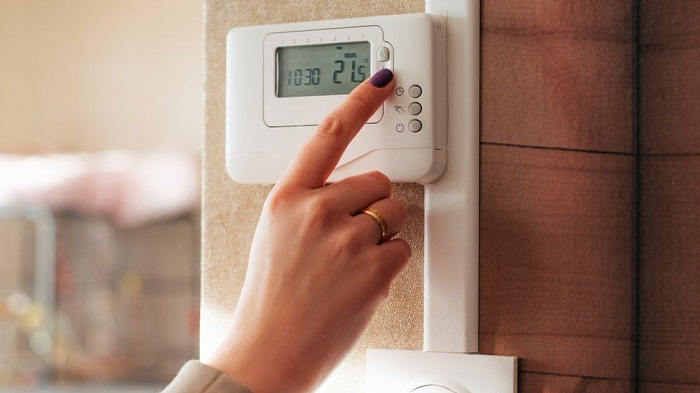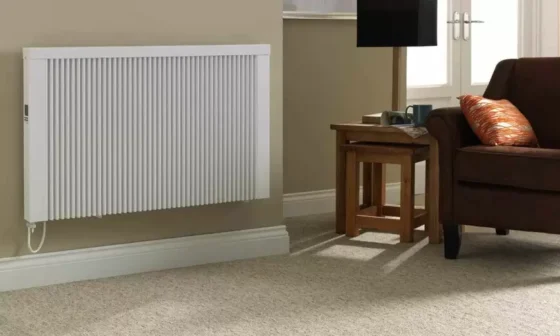
Looking to save on energy bills? Digital heating thermostats could be the answer. These smart devices allow you to control your home’s temperature with precision, leading to significant cost savings.
In this guide, we’ll explore the benefits of digital thermostats, highlighting how their advanced features can lead to more efficient heating and substantial cost reductions.
Discover how upgrading to a digital thermostat can transform your energy management and put more money back in your pocket.
Understanding Digital Thermostats
Digital thermostats play a crucial role in managing energy usage, helping you save on bills, and reducing your carbon footprint. With the ability to manage heating schedules remotely, you can ensure your home is warm when you need it and save energy when you don’t.
According to Uswitch, smart thermostats can help cut heating costs by an average of 31%. This efficient technology adapts to your habits, preventing energy waste and ensuring optimal comfort. By adjusting the temperature based on your routines, you avoid the common pitfalls of manual thermostats.
Benefits of Smart Thermostats
Smart thermostats offer several advantages over traditional models. They allow you to set heating schedules, which helps keep your home comfortable while avoiding unnecessary energy use. By connecting to the internet, these devices can be controlled remotely via a smartphone app, making it easy to adjust the temperature when you’re not home.
A notable benefit is the energy savings. Some smart thermostats can lower heating bills by up to 10% by optimising heating patterns. This not only saves money but also reduces your carbon footprint. Additionally, smart features such as learning usage habits and integrating with other smart home devices further enhance their efficiency.
Comparing Types of Thermostats
There are various types of thermostats available, each with its own set of features and benefits.
- Traditional manual thermostats require you to set the temperature manually. They are simple but lack advanced features.
- Programmable thermostats allow for setting schedules, which can turn the heating on or off at specific times. This is a step towards better energy management.
- Smart thermostats take it a step further. They offer not only scheduling but also remote control, learning capabilities, and integration with other smart home systems. This makes them more efficient and user-friendly.
Essential Features to Consider
When choosing a smart thermostat, several features are important. One key feature is compatibility with your heating system and smart devices. Not all thermostats work with every type of boiler or home automation system.
Another essential feature is user-friendliness. You should look for models with intuitive interfaces and easy-to-use apps.
Energy reports are also valuable. They provide insights into your energy usage, helping you identify patterns and areas for improvement.
Additionally, features like geofencing, which adjusts the temperature based on your location, and voice control through virtual assistants like Alexa or Google Assistant can enhance convenience and efficiency. Look for models from trusted suppliers like Plumb2U.
Maximising Energy Savings
To make sure you save the most on your energy bills, it’s important to set and maintain optimal temperature settings and develop smart habits in your daily routines.
Optimising Temperature Settings
Efficient temperature settings are key to reducing energy consumption and saving money. Setting your thermostat to an energy-efficient temperature can significantly lower your heating costs. During winter, lowering the temperature by just one degree can result in considerable energy savings.
Using your thermostat schedule effectively can keep your home comfortable while reducing unnecessary energy usage. For instance, setting lower temperatures during the night or when you’re out can help cut down on heating costs. It’s recommended to use a thermostat schedule to ensure your HVAC system runs more efficiently.
Another useful feature is the energy-saving mode available on many smart thermostats. This mode automatically adjusts the temperature to the most energy-efficient settings and can help you save even more.
Incorporating Smart Habits
Developing smart habits is essential for maximising your energy savings. One way is to regularly check and update our thermostat schedules to match your lifestyle changes. This ensures your heating system isn’t running unnecessarily when you’re not at home.
Using remote access features allows you to adjust the temperature even when you’re away. This can prevent energy waste if your plans change unexpectedly. For instance, you can turn off the heating if you decide to stay out longer than anticipated.
Regular maintenance of your heating system can also improve its efficiency. Keeping the system clean and in good working order ensures it runs effectively, using less energy to heat your home. Additionally, closing curtains at night and using draft excluders can help retain heat, reducing the need to rely heavily on your heating system.
Incorporating these smart habits into your daily routine can lead to substantial energy and cost savings.
Installation and Upfront Costs
When considering digital heating thermostats, both the installer you choose and the initial outlay are critical factors. Selecting a reliable installer and understanding the costs involved will ensure a smooth process and effective long-term savings.
Selecting the Right Installer
Choosing the right installer can greatly affect the efficiency and effectiveness of your digital heating thermostat. We recommend starting by getting quotes from multiple installers to compare prices and services. It’s essential to check their credentials and customer reviews.
Many energy suppliers offer installation services and might include a thermostat in their energy tariffs. This could mean spreading the cost over time rather than paying upfront. Additionally, some manufacturers provide trained installers, which can ensure that the device is set up correctly and performs optimally.
Understanding the Initial Outlay
The initial cost of installing a digital heating thermostat varies. Generally, the price includes both the device and the labour. There are other costs to consider as well, such as extra wiring or additional control units.
It is important to budget for these to avoid unexpected expenses. Keep in mind that while the upfront costs can seem high, the potential savings on energy bills can offset these expenses over time, making it a worthwhile investment.
Impact on Property and Lifestyle
Installing digital heating thermostats brings both financial and comfort benefits. These devices can boost property value and convenience in daily life, particularly regarding modern heating controls and energy efficiency.
Home Value and Appeal
Smart thermostats can increase the property value and appeal of your home. Prospective buyers are often attracted to energy-efficient features that promise lower utility bills. Homes with these thermostats stand out in the market due to their modern, smart home capabilities.
Additionally, integrating smart heating controls with other smart devices creates a seamless experience, making your property more technologically advanced. Features like remote control and automated schedules provide convenience, which boosts the desirability of your homes.
Some programmes even offer incentives for using energy-efficient products, which further enhances your property’s appeal and potential value increase.
Adapting to Smart Heating Controls
Adopting digital thermostats is relatively straightforward, but there are a few adjustments you need to make in your lifestyle. Smart heating controls, like those found in thermostatic radiator valves and heat pumps, require you to understand their settings to maximise efficiency.
You may need to adjust our heating habits. For example, scheduling the heating to turn on just before arriving home ensures comfort without wasting energy.
Using the smart thermostat app to control radiators and hot water systems allows you to fine-tune the heating schedule. This helps maintain optimal comfort in different rooms. Embracing these changes can significantly enhance your daily lifestyle and promote an energy-efficient home.


